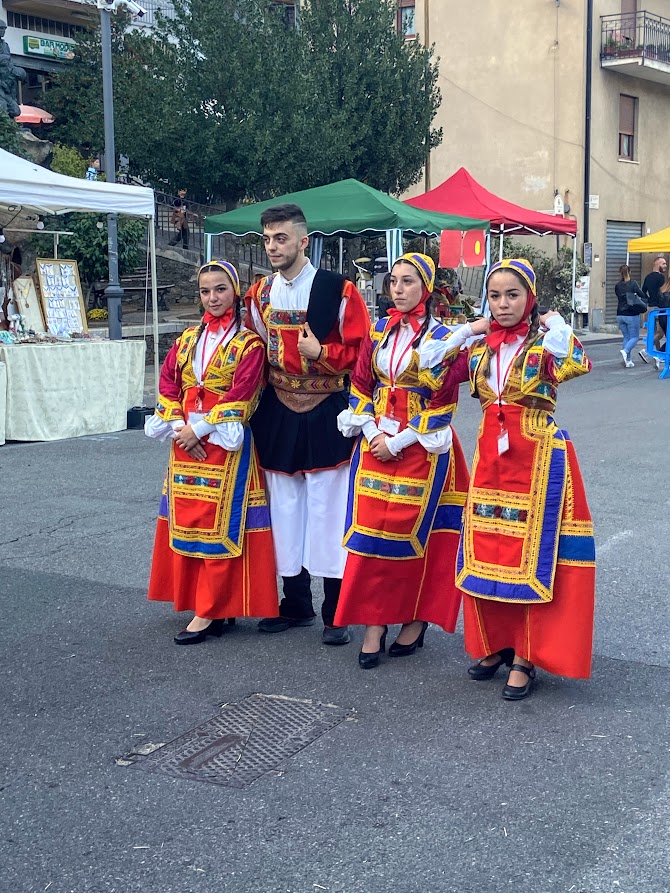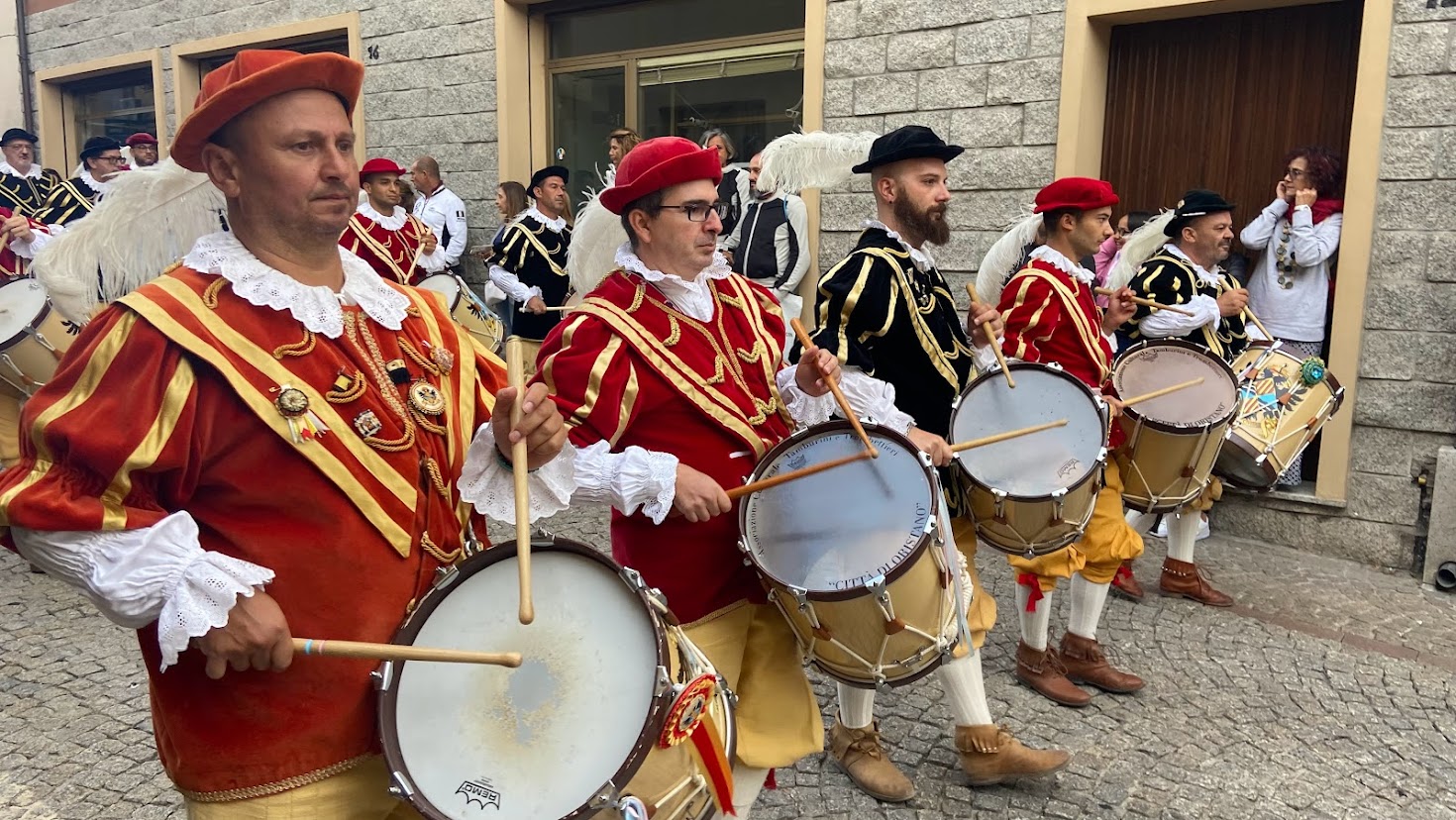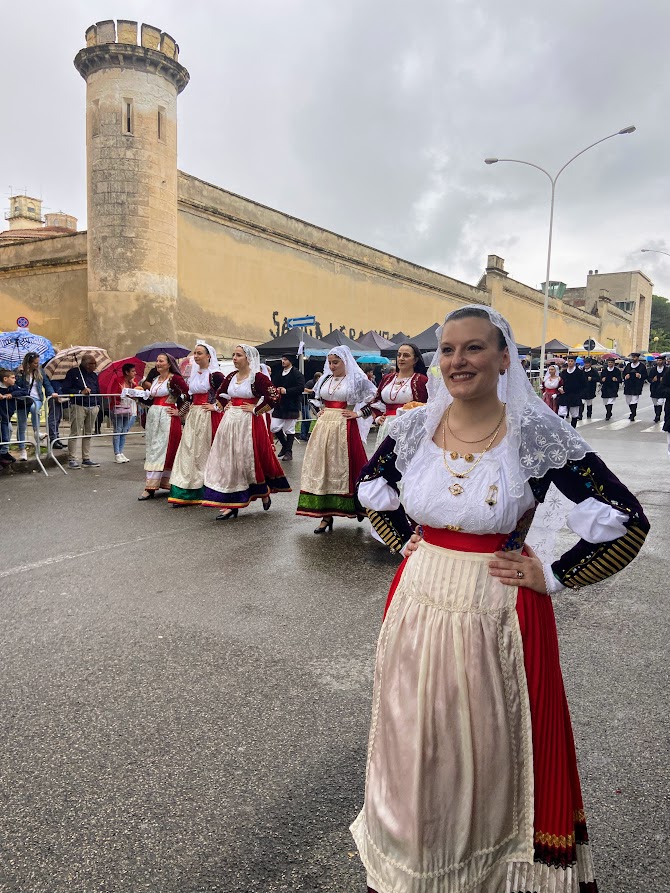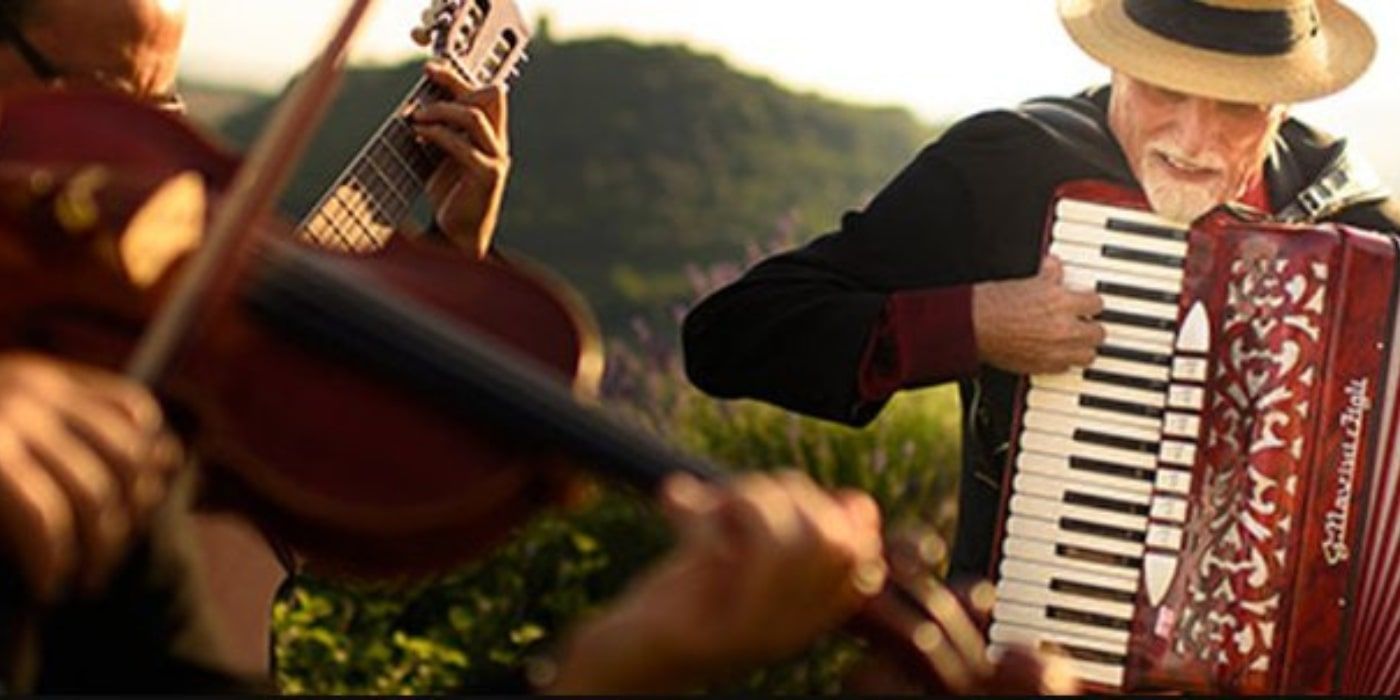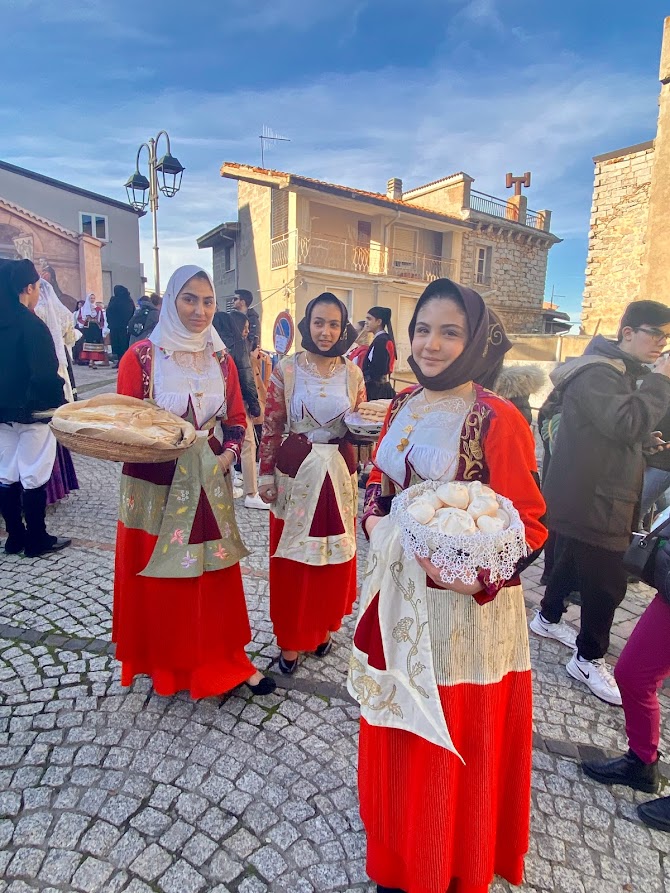
Major festivities and celebrations
Whether it is a small folk festival celebrating one of the excellent ingredients, a celebration of the patron saint of a city or village, or large event that attracts the attention of thousands of visitors, there is always a reason for gatherings that unite souls and strengthen traditions. It can be said that every day is celebrated in Sardinia. Associated with the first calendar month are the celebrations of St. Anthony’s bonfires, a ritual that is held on the night of January 16th-17th and opens the Carnival season. In the city centres huge bonfires and vast fireplaces are built to honour the saint Antony, who, according to the legend, brought fire from the underworld and handed it over to the people afflicted by winter. During the following month you can meet the main protagonists of the Sardinian carnival in different places on the island. It has its origins in pagan rituals celebrating the god Dionysus, associated with abundance and fertility, and celebrates the cycle of life, from birth to death. In Mamoiada, Mamuthones, led by the red-and-white Issohadores, perform the age-old dance, and now and then they grab a girl from the audience and in exchange for her redemption demand usually a kiss or a glass of wine. In Ottana, Merdules limp along, taming huge Boes on a rope, both wearing sheep’s wool and hand-carved wooden masks. The trio is completed by Sa Filanzano, a mourning female figure dressed in black and holding a horsehair. In Orotelli, Sos Thurpos in black cloaks with hoods and bells nudge each other, and in Gavoi masked Sos Tumbarinos play leather drums. In Lula there is a very raw parade, where Su Battileddu is the victim, dressed in dark fur with a face smeared with soot and red paint to symbolize blood. In Orani, characters with cork masks, curved moustaches and horns, the so-called Sos Bundos, try to impale you on a pitchfork. In Fonni you can witness a wild spectacle, where the Sos Buttudos will try to tame the exuberant Urthos, often in vain, who climb the facades of local houses and rush into the crowds to smear the girls’ faces. In Ovodda the carnival is dominated by a large mask of Don Conte Forru, assembled from different materials, in Lodine, similarly, the mask of Su Ziomo is pulled on a cart, accompanied by young men dressed in black hoods with a wooden human head suspended on their chest. In Austis, Samugheu and Ula Tirso you can admire masks made from the bones and heads of wild animals. In Bosa there is a very specific carnival, which presents the celebration of fertility and among other things, the menstrual cycle is also celebrated. All these masks and rituals represent a large part of the Sardinian identity, and although many of them have already disappeared, the tradition of the most famous ones still continues and is passed down in families from father to son and mother to daughter. You can experience a completely different atmosphere in Oristano, where there is Sa Sartiglia festival, a parade of horsemanship and nobility, to which we have dedicated an entire chapter in this section. After this wild carnival season, the island slowly begins to prepare for Easter and Holy Week celebrations, which are still very much enjoyed here. The first days of May are dedicated to the patron Saint Efisio, whose simulacrum is carried in a procession from Cagliari to the church dedicated to him in Nora. It is followed by the Cavalcata Sarda, the second largest horse race and parade in Sardinia after Sa Sartiglia. It is held in the centre of Sassari and it begins with a parade of several dozen ensembles from all over Sardinia, dressed in traditional costumes, followed by equestrian competitions and horse acrobatics. It is one of the most beautiful and colourful festivities that provides a deep insight into the history of the island. At the beginning of June, the focus is on the island of San Pietro where Girotonno festival takes place. For several days it celebrates tuna from local waters with gastronomic competitions, tastings and cooking shows. As part of the celebrations, various excursions and boat trips are organized, during which you have the opportunity to get familiar with this less touristic part of Sardinia. The beginning of July is dedicated to Saint Constantine in Sedilo, in whose honour there is yearly S´Ardia, an equestrian race around the local church. In the centre of Sassari the day before Ferragosto in August the Candelieri procession carries the decorated wooden candlesticks. Each of them represents a historical craft guild, while its representatives hold it on their shoulders and carry it in a dance step through the streets to the Church of the Virgin Mary. The parade is followed by a feast and celebration, accompanied by Sardinian musical groups. At the end of August, the Redeemer celebrations take place in Nuoro. Although it is originally a religious holiday, over the years it has also become a parade of traditional costumes, dance groups and crafts. In the town of Cabras on the west, the Corsa degli Scalzi, a barefoot running festival is held every year at the beginning of September. The origins date back to 1619 AD, when, as a result of the Moorish raids that plagued the area for a long time, the locals performed a long and fast run to secure the statue of the Saviour from the Moors. According to legend, the “barefoot” runners used branches tied to their bare feet instead of shoes to kick up as much dust as possible and appear more numerous. Their ruse worked perfectly as the Saracens, terrified at the prospect of facing a large army, fled. The village and the San Salvatore simulacrum were saved. Since then, every year in memory of this miraculous event, the ritual is repeated to renew the promise made to the saint. September is also the month when the Autumn in Barbagia festival begins. Every weekend until Christmas, locals open their backyards to share the best and most typical of their production with visitors. In Bitti you can listen to the intangible heritage of the island, the singing of tenors. In Dorgali, you can observe the production of hand knives, wooden masks and precious jewellery. In Tonara you can taste the first-class Turkish delight nougat, and in Aritzo the famous roasted chestnuts. In Desulo you can admire the colourful costumes and dwarf palm products, in Mamoiada you can taste the delicious Cannonau red wine and in Fonni the simple delicacies of the local mountain cuisine.
